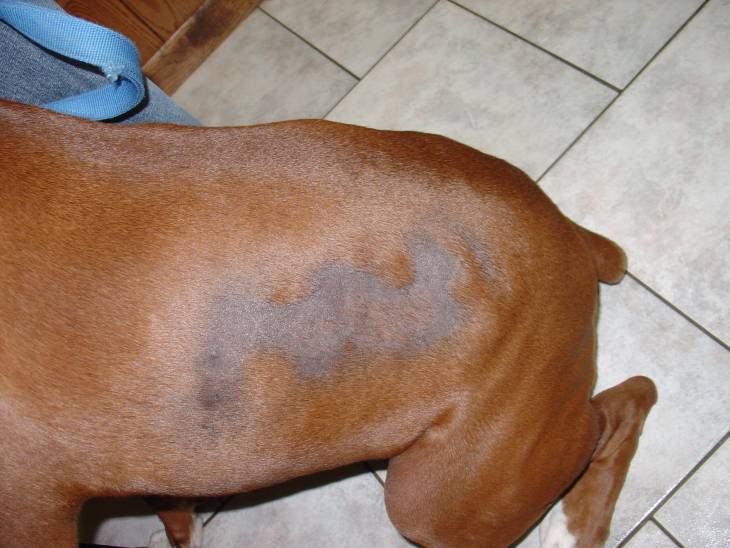What Black Spots on Dog Skin Means (Should You Worry)
You love your dog’s coat. It’s practically part of his personality. But one day, you notice that his beautiful coat is peppered with a few black spots here and there. What’s going on? Is he in trouble? Better yet, can you fix the problem?
Black Spots and Your Dog’s Pigment
The black spots that start manifesting on your pooch’s body is usually a sign of hyper-pigmentation. This condition simply means that your dog is producing a higher amount of natural skin pigment, also known as melanin. This essentially is the condition that causes freckles in humans.
Hyper-pigmentation is most obvious on breeds with white coats, although the condition can affect any breed. It is commonly present on a dog’s fur and skin, but it can also affect the coloring of your pooch’s nails in some cases. Sun exposure, aging, and excessive friction between pieces of skin can cause the formation of these spots.
Most importantly, the black spots formed by hyper-pigmentation are totally harmless in most cases. If it's just skin discoloration going on, your dog may not pay much attention to the spots. However, if you notice your dog is reacting to them rather aggressively, there may be something else other than an increase in melanin afoot.
When You Should be Concerned About your Dog’s Black Spots


While the sudden appearance of black spots on a dog is usually no big deal, there are times when they demand medical attention. The tell-tale signs that the spots are something serious are when they are accompanied by other symptoms. Some of these symptoms include hair loss, bleeding, bumps filled with fluid, or crusty skin.
Symptoms like crusty skin and patches of baldness are linked to a condition known as Alopecia X, or black crust skin disease. This is a genetic condition that tends to particularly affect male breeds of Nordic descent, such as Pomeranians and Alaskan Malamutes. The cause of the issue is generally considered to be a hormonal imbalance.
While the usual prognosis of Alopecia X is to let the condition run its course or expedite it through medication - the lost hair will grow back - it is important to let your vet make a proper diagnosis of the condition. That’s because the symptoms of Alopecia X are very similar to a much more serious condition called Cushing’s disease.
This particular condition is essentially attributed to your dog’s adrenal system running amok. However, the reason for this unusual activity could be linked to tumors warping the gland’s functions. The treatment of this particular syndrome is largely based on the root of the disease.
Other conditions that are worthy of scrutiny by your vet include hypothyroidism, hemorrhaging or excessive bruising under the skin, or allergies. Again, the treatment that your vet will deploy will greatly depend on what is diagnosed.
What if the Black Spots on my Dog Look Like Dirt?
related resources
Sometimes, you may see that the spot your dog perpetually itches is covered with little black spots that look like flecks of dirt. In this case, your dog may not have hyper-pigmentation going on. Rather, he may be suffering from a yeast infection.
If you see this, don't panic. This particular kind of infection is caused by a harmless fungus that thrives in the dark, dank places on your dog's body. This is why you'll commonly see the condition on your pooch's groin area, his ear canal, the butt, and the sex organs.
You can usually treat a dog’s yeast infection by bathing your dog in a special shampoo specifically designed to create an environment where yeast cannot thrive. Your vet may also prescribe an oral medication or administer an injection if the infection is particularly severe.
Err on the Side of Caution
You may find that the line between black spots that are harmless and those that are harmful are too fine for your comfort level. If that’s the case, it’s always wise to keep things close to the vest and get your local vet involved. Doing so will provide you with peace of mind in addition to a proper diagnosis.
With that being said, black spots on your dog are probably not going to be a huge deal. More often than not, they will turn out to be “dog freckles.” If this is the case, and he doesn’t mind them being there, neither should you. Need more dog stuff? Read about dog car hammock.



